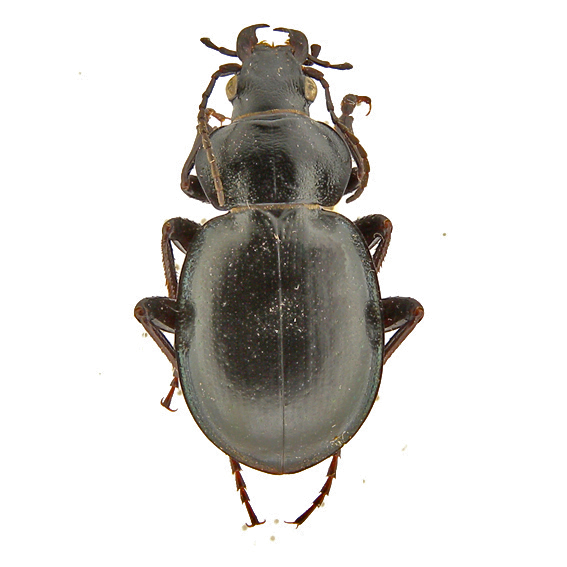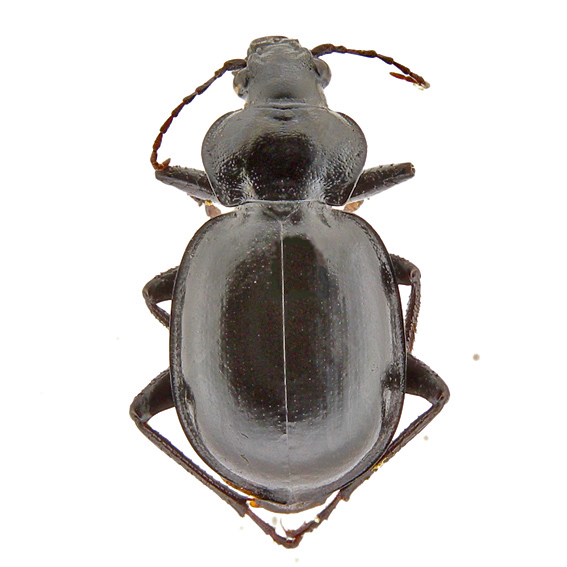Calosoma (Callistenia) latipenne Horn, 1870
Calosoma latipenne Horn, 1870: 70 (described from California, South Sierras) type material and depository not stated; neotype ♂ in Museum of Comparative Zoology, Harvard University, Cambridge, Ma. (https://mczbase.mcz.harvard.edu/)
Calosoma arcuata Casey, 1897: 343 (described from Cochise, Arizona); syntype in National Museum of Natural History, Washington (https://collections.nmnh.si.edu/)
Callisthenes tularensis Casey, 1913: 68 (described from Tulare Co., California); syntype in National Museum of Natural History, Washington (https://collections.nmnh.si.edu/)
Callisthenes opimus Casey 1913: 69 (described from Kern Co., California); syntype in National Museum of Natural History, Washington (https://collections.nmnh.si.edu/)
Calosoma (Callisthenes) subaeneum latipenne Breuning, 1928: 81
Calosoma (Callisthenes) subaeneum opimum Breuning, 1928: 81
Callisthenes (Callistenia) subaenea latipennis Lapouge, 1931: 378
Callisthenes (Callistenia) subaenea opima Lapouge, 1931: 378
Microcallisthenes (Callistenia) subaeneus latipennis Jeannel, 1940: 173
Microcallisthenes (Callistenia) subaeneus opimus Jeannel, 1940: 173
Callisthenes (Microcallisthenes) latipennis Gidaspow, 1959: 306
Callisthenes (Callistenia) latipennis Erwin, 2007: 77
Length 14-18 mm. C. latipenne, as C. subaeneum, is characterized by a transverse pronotum with an almost smooth disk and roughness limited to the sides and to the rear part, its posterior lobes are broadly rounded not projecting from the base.
Compared to C. subaeneum, C. latipenne can be distinguished because it is generally slightly smaller in size and has more rounded and shorter elytra. Moreover, according to Gidaspow (1959) it has also a more elongate penis.
The sculpture of the elytra consists in striae identified by rows of shallow punctures. The intervals are flat and smooth, or very weakly incised by transverse wrinkles. The foveae on the primary intervals are small and barely visible. The upper body is black with faint greenish blue reflections.
latipenne was first considered by Breuning, togheter with opimum, as subspecies of C. subaeneum, followed on this by Jeannel (1940:173), who, we have to remember, did not knew the species. Gidaspow (1959), for her part, has re-evaluated C. latipenne as a good species and considered opimum as a synonym.
All recent data concerning C. latipenne refer to California, but its presence in neighboring areas of other States can not be excluded. Indeed, according to Burgess and Collins (1917), it is also found in Nevada (Reno), and Callisthenes arcuatus, that Jeannel and Gidaspow dealt with as a synonym, was described from Arizona (Cochise).
Examined specimens and literature’s data
United States. Arizona. Cochise (NMNH); California. Kern County: Bakersfield (AMNH, SB), Elk Hills (EM, SB); Mojave desert (EM); Fort Tejon State Park (AMNH), Los Angeles Co: Lancaster, Antelope Valley; Madera Co. (Breuning 1928b: 83), Fresno Co., Tulare Co., San Luis Obispo Co. (www.inaturalist.org/), San Bernardino Co. (Gidaspow 1959: 307), San Benito Co., Santa Barbara Co. (https://bugguide.net); Nevada: Reno (Burgess & Collins 1917: 122), Eureka County (www.inaturalist.org); Washington (OSUC)
Notes: Brachypterous. It inhabits lowland to upland from 100 to 1300m of altitude in grassland or on sandy soil with scarce vegetation. It can be active in cloudy days. According to the examined records adults can be found from January to July but they seem more frequent in March - April.
 Horn, 1870 United States: California Bakersfield 20. III. 26 |
 Horn, 1870 United States: California, Mojave, (coll Migliaccio) |